Prof. Bruce Johnson, University of Technology Sydney, University of Glasgow and University of Turku
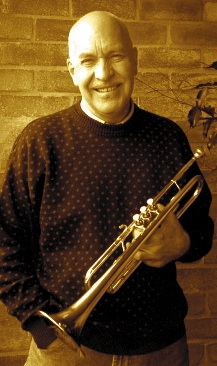 Bruce Johnson was formerly professor of English. He currently holds honorary professorships in Departments including Music, Cultural History, Communications and Media in the universities of Glasgow, Turku (Finland) and UTS, UNSW and Macquarie in Australia.
Bruce Johnson was formerly professor of English. He currently holds honorary professorships in Departments including Music, Cultural History, Communications and Media in the universities of Glasgow, Turku (Finland) and UTS, UNSW and Macquarie in Australia.
He has long been active as a jazz musician, award-winning broadcaster and record producer. As government advisor on music policy, his work included the legislation-changing report Vanishing Acts on live music, co-authored with Shane Homan. He was prime mover in establishing the government-funded Australian Jazz Archives. He co-founded the International Institute for Popular Culture in Finland, and is on the editorial boards of some half dozen of the world's leading academic music journals.
His academic publications number several hundred, including author/editor of around a dozen books, among the most recent of which are on popular music and violence, jazz and totalitarianism, and sound, memory and space. In addition to continuing work on music, his current research field is sound and cognitive theory.
Death by Sound
Violence, it may be said, is the pursuit of politics by other means. That is, it is the clearest possible demonstration of relations of power. As cinema commentary exemplifies, the study of the performance of violence is dominated by the visual. But the settings in which violence is performed have always involved sound, and most particularly music. A brief overview of the history of this connection discloses that it can be traced back to the earliest documents of human culture. Since the late nineteenth century the nexus between sound and violence has become ever more powerful, to the point that, according to the World Health Organisation, by the turn of the century noise constituted one of the two major threats to social and individual welfare; it now provides the setting for all the tensions in a globalised consumerist economy.
This is the performance mode I want to engage with today for a number of reasons. One, I think the live performance of violence in the Western world is most commonly conducted in sonic and in particular musical settings. Two: I want to suggest that sonic modalities are, for transcultural, physiological reasons particularly effective vehicles for the conduct and performance of violence. I want to explore why this might be so. What is it about sound that has such affective power? This will involve some entry into the areas of acoustic phenomenology and of the neuro-science of sonic affect. And I want to propose that these enquiries will take us into new theories of cognition which can be most effectively investigated by deploying, not the visual phenomena that currently dominate the field, but the affective potential of sounding and hearing. And that potential is most dramatically demonstrated in the sonic performance of violence.
Dr. Lisa Fitzpatrick, University of Ulster
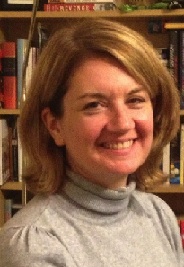 Lisa Fitzpatrick studied in Trinity College and University College Dublin prior to completing her PhD at the Graduate Centre for Studyof Drama, University of Toronto.
Lisa Fitzpatrick studied in Trinity College and University College Dublin prior to completing her PhD at the Graduate Centre for Studyof Drama, University of Toronto.
She is currently Head of the Research Graduate School for the Faculty of Arts. She has published extensively on performance and violence, post-conflict theatre, and gender, and has been funded by the British Academy and the Canadian High Commission.
She has been aninvited speaker at a number of events, including the International Association for the Study of Irish Literatures (IASIL), the WarwickPolitics and Performance Network, and the Irish Theatrical Diaspora project. She convened the conference 'The North: Exile, Diaspora, Troubled Performance', in Derry in 2012 and, worked with the Playhouse on the International Culture Arts Network Festival in Derry in 2013.
She is a founding member of the Irish Society for Theatre Research, and convenes the Gender and Performance Working Group.
Gender, Violence, and Irish Nationalism
This paper explores the relationships of nationalism to systemic and symbolic forms of violence, drawing on the work of Judith Butler on subject formation and vulnerability, and the work of Hannah Arendt, Walter Benjamin, and Slavoj Zizek to examine how violence is represented on stage and in mimesis.
The paper considers examples from the work of Anu Productions, the Theatre of Witness project, and Smashing Times Theatre Company, as well as examples from popular history-based performances such as the 2016 musical The Train. While the majority of this work examines lived experience in conflict situations, The Train offers a a largely optimistic comic response to some of the systemic abuses of the past, telling the story of the 1971 'Contraceptive Train' which brought the Women's Movement to public attention.
The paper seeks to identify a range of performance strategies used to draw affective and empathetic responses from spectators, and the capacity of performed violence to effect these responses.
Dr Bree Hadley, Queensland University of Technology
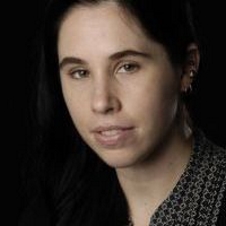 Dr Bree Hadley is a senior lecturer in the Creative Industries Faculty at the Queensland University of Technology.
Dr Bree Hadley is a senior lecturer in the Creative Industries Faculty at the Queensland University of Technology.
Bree was the keynote speaker at the Postgraduate and Early Career Researcher Symposium in June 2016.
Bree's research 'investigate[s] the construction of identity in contemporary, pop cultural and public space performance – live and online public space performance – often concentrating on the way artists marked by disability and other bodily differences mobilise images and media from the public sphere to subvert stereotypes, and the way spectators respond to such work.'
It's A Social Experiment: Pranks, Political Activism, and Performing Marginality for a Politically Correct Mainstream Audience
In this paper, I investigate the phenomenon of so-called 'social experiments', where pranksters perform stigmatised identities in public spaces and places – from breastfeeding mothers, to Muslim women wearing burqas, to disabled people using canes, crutches and wheelchairs – to prompt a response from passersby. Though cast as politicised performances of the real designed to draw attention to the prejudices of the average passerby, the structure of these 'social experiments', frequently focused on candid camera style pranks they film, and upload on social media for all to see, with the hope of going viral and getting a run on morning television, raises performative, political and ethical questions. In this paper, I unpack some of these questions, using examples of social experiments focused on (dis)ability, race, religion, and gender identity. I examine some of the different effects these social experiments can produce, depending on whether they are performed by actors, pranksters or political activists, and whether they are performed by people who really occupy the stigmatised identity they perform or people who are simply wanting to say something about a fraught social topic. I ask whether these social experiments, when they go viral online, produce bonding social capital within communities impacted by current social prejudices, bridging social capital between these and broader communities, both, or neither.
Agon Hamza, Slovenian Academy of Sciences and Arts
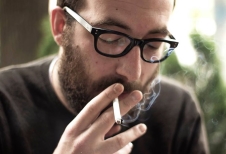 Agon Hamza is a PhD candidate, working under the supervision of Slavoj Zizek, at the Institute of Philosophy, Slovenian Academy of Sciences and Art, Ljubljana. He is also the co-editor and co-founder of Crisis and Critique. His work ranges over a number of topics but is informed primarily by psychoanalysis, Marxism and Hegel. He has published Slavoj Zizek and Dialectical Materialism (with Frank Ruda) and has a monograph Althusser & Pasolini: Philosophy, Marxism and Film forthcoming.
Agon Hamza is a PhD candidate, working under the supervision of Slavoj Zizek, at the Institute of Philosophy, Slovenian Academy of Sciences and Art, Ljubljana. He is also the co-editor and co-founder of Crisis and Critique. His work ranges over a number of topics but is informed primarily by psychoanalysis, Marxism and Hegel. He has published Slavoj Zizek and Dialectical Materialism (with Frank Ruda) and has a monograph Althusser & Pasolini: Philosophy, Marxism and Film forthcoming.
Agon was a keynote speaker at the Mediating the Realconference held 31st August - 2nd September 2016.
From Lacan to Althusser and back: on the theory of communist practice
In “Materialist Dialectics” Louis Althusser defines practice from the standpoint of a certain notion of rule (all practices, theoretical and ideological included, transform a raw material into a determinate product). Departing from this, we could criticize that theory of transformation as being the notion of concrete labour in capitalism. Isn't the capitalist mode of production which has created the theory of abstract labour, which is this general pattern all activities are supposed to carry as their infra-structure (the pattern of transforming an indeterminate x into a determinate y)? What if militant work requires a different theory of transformation in order to break away from capitalist mode of production?
In this paper, I will explore the consequences of rethinking the notion of practice based on Lacan's and Žižek's psychoanalytical and philosophical contributions, specially considering the theory of the drives, where means and ends can be inverted, and the theory of the subject, where the result of a transformation is not always determined, but sometimes negative and elusive.
Dr Misha Kavka, The University of Auckland
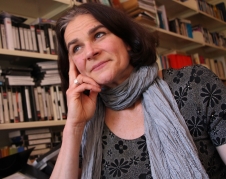 Dr Misha Kavka is an academic in the Department of Film, Television and Media Studies at the University of Auckland. Her research primarily concerns critical theoretical understandings of reality television. Misha has written a number of monographs, including Reality Television and Reality Matters: Affect and Intimacy in Reality Television. Misha has written extensively on affect and media theory, as well as psychoanalysis, including for Camera Obscura. Misha is also Associate Dean (academic) in the Faculty of Arts at the University of Auckland.
Dr Misha Kavka is an academic in the Department of Film, Television and Media Studies at the University of Auckland. Her research primarily concerns critical theoretical understandings of reality television. Misha has written a number of monographs, including Reality Television and Reality Matters: Affect and Intimacy in Reality Television. Misha has written extensively on affect and media theory, as well as psychoanalysis, including for Camera Obscura. Misha is also Associate Dean (academic) in the Faculty of Arts at the University of Auckland.
Misha was a keynote speaker at the Mediating the Real conference held 31st August - 2nd September 2016.
Return to Real Time: Temporal Elasticity and the 'Spread-Event'
Social media has been hailed as the ultimate real-time mechanism. The phrase 'real time' recalls documentary film, implying a camera that captures events as experienced, in their full duration and sequential temporality. The experiential media that have experimented with the 'real' since the rise and fall of traditional documentary, however, increasingly problematise this notion of real time by revealing the multiple, expandable nature of mediated immediacy. Reality TV telescopes time into nuggets of heightened affect; social media expands time through shared attention to non-events; and the prosthetic media of wearable technology subjects the body to a dialectical temporality of movement and arrest, bound to a dialectical spatiality of planarity and depth. Rather than 'real events' consisting of isolatable and sequential moments, these media forms expose real time as elastic and malleable, its expanse, density and duration delineated by engagement and affect. Drawing on Bergson's notion of temporal heterogeneity and Benjamin's notion of standstill from the Arcades project, this paper will bring together the three media forms mentioned in order to argue, contra Badiou, that our contemporary experience of time is affectively attentional rather than evental. The event thus disappears in its mediation, not because it is unreal but rather because it becomes a 'spread-event', incalculably enlarged from within by media users' affective engagement.
Dr Allen Meek, Massey University
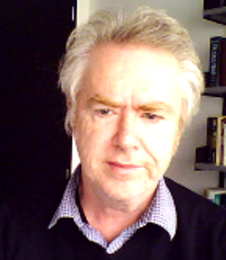 Dr Allen Meek is a Senior Lecturer in the School of English and Media Studies at Massey University. He is the author of Trauma and Media: Theories, Histories and Images (Routledge 2010) which explained how the concept of trauma has been used to understand modern media in the writings of theorists such as Freud, Benjamin, Adorno, Barthes, Derrida and Zizek. His latest book is Biopolitical Media: Catastrophe, Immunity and Bare Life (Routledge 2016). Dr Meek teaches a 300 level paper called 'Trauma and Media' which explores the role of media images in shaping our understanding of war, genocide, atrocity, terrorism and other catastrophes. He is currently researching how natural history and biology have shaped modern conceptions of cultural memory, particularly the transmission of the past by media.
Dr Allen Meek is a Senior Lecturer in the School of English and Media Studies at Massey University. He is the author of Trauma and Media: Theories, Histories and Images (Routledge 2010) which explained how the concept of trauma has been used to understand modern media in the writings of theorists such as Freud, Benjamin, Adorno, Barthes, Derrida and Zizek. His latest book is Biopolitical Media: Catastrophe, Immunity and Bare Life (Routledge 2016). Dr Meek teaches a 300 level paper called 'Trauma and Media' which explores the role of media images in shaping our understanding of war, genocide, atrocity, terrorism and other catastrophes. He is currently researching how natural history and biology have shaped modern conceptions of cultural memory, particularly the transmission of the past by media.
Allen was a keynote speaker at the Mediating the Real conference, held 31st August - 2nd September 2016.
Real Time Transmission: Mediating Trauma and Managing Political Identity
The concept of the real has become central to conceptions of collective memory that make trauma, in Caruth's memorable phrase, a “symptom of history.” The notion of a traumatic reality provoking a crisis of representation, however, has distracted from the important role that stress-inducing images and narratives play in defining, mobilizing and controlling political identity. Wounding through violence and shock perform important functions in processes of religious and political initiation and conversion. For this reason the uses of audiovisual media to produce traumatic identifications can also be understood as real effects of power.
Trauma theory has promoted testimony as the model for mediated trauma because it directly addresses the viewer as witness and in doing so potentially constitutes a political community. Felman has shown how the emphasis on testimony in Holocaust representation has its origins in the 1961 Eichmann trial, but she neglects the important role that audiovisual media played in covering the event. Arendt criticised the way that the trial put the victims central stage, making the event a “show trial” and focusing on what the Jews had suffered rather than what Eichmann had done. Contra Arendt, Felman argues that the trial gave a voice to survivors and that the purpose of emphasizing the living witness was to transmit the emotional shock of the events rather than just the factual proof. As Pinchevski has shown, audiovisual recording has determined much of this change in the function of testimony as embodiment, affect, and silence. But Arendt's argument -- that the more important lesson of the trial was the evidence of a new kind of political subject constituted by a pervasive system of state violence – potentially leads us toward an alternative theory of mediated trauma.
We can develop a different perspective on testimony if we consider deliberate attempts to traumatize media viewers. Psychological research on “stress films” in the early 1960s made repeated use of one specific film, Subincision, showing an initiation rite involving genital mutilation of Australian Aboriginal boys. The actual content of this film and the reasons for its selection have, to my knowledge, as yet attracted no commentary. I propose that this film should be related to the idea of trauma as a transformation of cultural identity and will discuss two important historical contexts for understanding this research on mediated trauma. The first is the importance of colonial trauma as an historical precedent for the Holocaust (a connection also suggested by Arendt). Was Subincision distressing for Western viewers because they perceived its violence as “primitive” or “incomprehensible”? The second is the politics of the Cold War and experiments on “thought reform” and “mind control.” This period, in which the Eichmann trial was televised and research undertaken on stress films, was shaped by the ideological struggles of the Cold War and the attempt to re-programme populations though the systematic application of shock and the threat of mass destruction.
The final section of the paper considers the ISIS decapitation videos released on the Internet as contemporary examples of stress-inducing media. As Foucault has shown, public execution is a fundamental means of acting out traditional sovereign power. But ISIS are also knowingly transmitting shock and threatening violence in an image space shaped by technological media consumption. Today media transmit traumatic realities as a means of constituting and managing new political subjects, no longer limited by the traditional sovereign power of religion and state. This paper traces a genealogy of that new subject.
Prof. Nikos Papastergiadis, University of Melbourne
Nikos Papastergiadis is a professor at the School of Culture and Communication at the University of Melbourne. He studied at the University of Melbourne and University of Cambridge. Prior to returning to the University of Melbourne he was a lecturer at the University of Manchester. Throughout his career, Nikos has focussed on issues relating to cultural identity and worked on collaborative projects with artists and theorists of international repute, such as John Berger, Jimmie Durham and Sonya Boyce. His current research focuses on the investigation of the historical transformation of contemporary art and cultural institutions by digital technology. His sole authored publications include Modernity as Exile (1993), Dialogues in the Diaspora (1998), The Turbulence of Migration (2000), Metaphor and Tension (2004) Spatial Aesthetics: Art Place and the Everyday (2006), Cosmopolitanism and Culture (2012), Ambient Perspectives (2013) as well as being the editor of over 10 collections, author of numerous essays which have been translated into over a dozen languages and appeared in major catalogues such as the Biennales of Sydney, Liverpool, Istanbul, Gwanju, Taipei, Lyon, Thessaloniki and Documenta 13. He is a Fellow of the Australian Academy of the Humanities and co-chair of the Greek Centre for Contemporary Culture, and Chair of the International Advisory Board for the Centre for Contemporary Art, Singapore.
Nikos is presenting one of two keynote addresses at Performing Precarity: Refugee Representation, Determination and Discourses.
Does philosophy contribute to an invasion complex?: Sloterdijk the Antagonist and the Agonism of Mouffe
Why does the presence of cultural difference inspire such hostility? Even if the proportion of people who are defined as a minority is expanding, and the role of cultural difference is assuming greater significance in public life, why is this presence interpreted as such a threat to the nation, and why is the arrival of the other rendered as the apocalyptic end of civilization? The former Australian Prime Minister Tony Abbott distilled these fears in his imperative: that migrants should “join us not change us”. In this lecture we will examine how the disproportionate fears that are directed at multiculturalism, are also entangled with wider anxieties that are also associated with the turbulence of global migration patterns and the transnational challenges to refugee flows. These concerns also revolve around an even broader discussion on the relationship between mobility and culture in contemporary society.
Prof. Suvendrini Perera, Curtin University
Suvendrini Perera is a John Curtin Distinguished Professor and Research Professor of Cultural Studies at Curtin University, where she also serves as Deputy Director of the Australia-Asia-Pacific Institute. Her recent books include Australia and the Insular Imagination: Beaches, Borders, Boats and Bodies and Survival Media: The Politics and Poetics of Mobility and the War in Sri Lanka. She receives research funding from the Australian Research Council (ARC) and the Canadian Social Sciences and Humanities Research Council (SSHRC). She is the lead researcher on the transnational project, Deathscapes, on racialized state violence in settler societies, also funded by the Australian Research Council. She is a co-founder of the collective, Researchers Against Pacific Black Sites.
Suvendrini is presenting one of two keynote addresses at Performing Precarity: Refugee Representation, Determination and Discourses.
Small Acts: Performance, Activism and the Spaces Between
Australian refugee policy operates through complex dynamics of visibility and invisibility, of spectacle and secret. These, in turn, are bound up in complex negotiations of the licit and illicit, of law and legitimacy, domestic and international, the sovereign and the humanitarian. Thus, on the one hand, the state literally advertises the harshness of its treatment of potential refugees, while on the other it has put in place a series of extraordinary legal measures to prevent the disclosure of 'on-water' matters and to punish those who expose abuses in its detention centres.Researchers Against Pacific Black Sites (RAPBS), as its name suggests, casts its mission as one of making visible that which is concealed from public view or rendering legible that which is excised or redacted from the record.
Drawing on Maurizio Albahari's powerful theorization of the 'crimes of peace', the paper focuses on the RAPBS performance, 'Call to Account' staged across three Australian cities to mark international Human Rights Day in December 2015. It considers the political, theoretical and affective effects of 'Call to Account' and similar performative acts that aim to make visible the crimes of the state, through the visibilization of grief and mourning.
Professor Perera is also delivering a public lecture in Archway Theatre 2 at 5pm on November 22nd, in association with the conference:
Lost at sea: Searching for Australia's moral compass
'I mean it's almost like Australia has lost its moral compass in terms of where it's going.' This comment by New Zealand Labour's foreign affairs spokesman, David Shearer, is part of an international chorus of condemnation of Australian policy towards refugees, and in particular its most recent practices of outsourced offshore detention on its neighbouring countries of Papua New Guinea and Nauru.This lecture presents a spatial analysis of Australian refugee policy through the concept of the borderscape. As distinct from understandings of the border as a singular and static line demarcating the territorial limits of a state, the borderscape is a multiplicity of shifting spaces, definitions, relations and practices of sovereignty.
The Australian borderscape includes coastlines, seas, outlying islands and territories as well as its varied claims of tenure over neighbouring lands and waters. It both remakes and reinforces divides among regional states, as historical relations of colonial sovereignty are reworked in the present through neoliberalized economic and cultural relations of power (aid, trade, technology, infrastructure), as well as militarized practices for securitizing and controlling the region.
The lecture locates Australian current border protection policies (including its policies towards New Zealand citizens incarcerated in immigration detention) in the context of its enduring spatial imaginaries and understanding of its place in the region.
Prof. Paul Tapsell, University of Otago
Professor Paul Tapsell is a lecturer in Te Tumu - School of Māori, Pacific and Indigenous Studies here at the University of Otago.
He presented the keynote address at the Ritual and Cultural Performance Hui and Symposium.
His research interests include Māori identity in 21st century New Zealand, cultural heritage & museums, taonga trajectories in and beyond tribal contexts, Māori values within governance policy frameworks, Indigenous entrepreneurial leadership, marae and mana whenua, genealogical mapping of tribal landscapes and Te Arawa historical and genealogical knowledge.
Prof Tapsell's keynote provides a Māori tribal perspective of the origins of marae as a ritually performative space, from navigation through to symbols of exclusive control over surrounding resources (mana o te whenua). As centres of the tribal universe on occasion marae become ancestrally-focused ritually pronounced demonstrations of kin identity. This is achieved through elders' prescribed collapsing of genealogical time (whakapapa) literally enabling descendants to engage their ancestors in the present. Key to such performances are tāonga - treasured belongings passed down from the ancestors themselves - capable of triggering critical ancestral memories, binding all present in terms of kinship and descent. Elders' performances of tāonga are critical to maintaining the boundary between tapu and noa, ensuring marae community wellbeing is maintained, especially during life-crisis (tangihanga). What is the role of today's tribal marae where the majority of descendants now live away from their ancestral homelands... Where now are tāonga being performed, and by whom?
Dr Amanda Stuart Fisher, Chair of Contemporary Theatre and Performance, Royal Central School London
I am a researcher and educator whose research focuses on verbatim and testimonial practices, socially engaged theatre and the relationship between care ethics and performance.
I grew up and went to school in Stevenage. After graduating from a degree in Performing Arts at Middlesex University I went on to work as a teacher of drama and dance at Fortismere School in Haringey. Later I moved on to work in the education department at the Royal Court Theatre. It was at the Royal Court that I began to fully explore the potency of new writing as a critical element of the theatre making process.
After then working as an applied theatre freelancer for a short time, I joined The Royal Central School of Speech and Drama in 1999. Since then I have received funding from the Performing Arts Learning and Teaching Innovation Network and the Higher Education Academy and have developed teaching and learning projects to examine the relationship between the academy, our industry partners and the applied theatre and social care sectors. Following a collaboration with Mosac and Little Fish Theatre company, I wrote From the Mouths of Mothers (2013) a verbatim play which explores child sexual abuse from the non-abusing mother’s perspective.
I am currently the course leader for the BA (Hons) Writing for Performance. I contribute to the MA Applied Theatre and the PhD Programme and supervise a number of PhD candidates in subjects ranging from refugee theatre making, disability and playwriting and the dramaturgy of trauma. My research has been published in a number of international journals and edited books. 2020 saw the publication of my monograph Performing the Testimonial: Rethinking verbatim dramaturgies and my co-edited collection (with Professor James Thompson) Performing Care: New perspectives on socially engaged performance, both by Manchester University Press.
I also work closely with Little Fish Theatre. I led the evaluation process of the company’s Embrace project, a multi-arts initiative aimed at young men at risk of having unhealthy sexual relationships and I wrote the final evaluation report for this project, which was published in 2021 (https://littlefishtheatre.co.uk/community-project/embrace/).
Witnesses to Carelessness: life performance as resistance and repair
Care ethicists Joan Tronto and Berenice Fisher define care through the concept of repair, describing the act of caring as a process of repairing the world, ‘so that we can live in it as well as possible’ (Tronto and Fisher 1991). The theme of care and carelessness, which frames this conference, invites us not only to consider how we might repair the world and the community in which we live, through acts of care, but also how we might respond to deficits of care – where, in other words, care is overlooked, refused, or withdrawn just when it is most needed.
In this keynote I want to think about how performance has responded to such moments of care deficit. My focus is on theatrical performances that are specifically concerned with injustices that emerge whenever the State fails to care for its people. Today we are more than familiar with the crisis of care deficits induced by state negligence; indeed, wherever we look, it seems the state – particularly the neoliberal state - has given up on one of the primary responsibilities of any state: the care of its citizens. When state policies no longer operate to protect the most vulnerable but instead, to borrow from Judith Butler, create the conditions in which only ‘some lives can be marked as lives’ and some ‘deaths will count as deaths’ (Butler 2003) then, I argue, we confront the most challenging of all care deficits: the carelessness of the state itself. The three performances I want to examine respond to different events of state injustice: the Metropolitan police’s flawed investigation into the murder of Black teenager Stephen Lawrence, the Grenfell fire in London, in which 72 people lost their lives as a result of a fire in a social housing tower and the lived experience of the ‘stolen generations’ in Australia, where thousands of children of Australian Aboriginal and Torres Strait Islander descent were forcibly removed from their families by Australian state agencies and the church missions. In both these instances, care deficits derived from the refusal by the state of the humanity and agency of vulnerable individuals. As a result, I argue, the care deficit was inextricably bound to what I will suggest is a form of ‘epistemic injustice’ (Fricker 2007), in which the ‘victims’ of state negligence were silenced, ignored, or simply disavowed as being ‘knowers’ or witnesses of their own experiences.
The three performances I examine use testimony, verbatim theatre, and other forms of documentary performance to expose the care deficit at the heart of these events; but in so doing, they also use personal lived experience to examine a politics of care. In their engagement with the intersections between the personal and the social; they show, finally, that between care and justice, one invariably discovers narratives that seek to expose the injustices that endure while also engaging in acts of resistance and repair, in which the status of ‘victim’ is refused.
Professor Ruth Fitzgerald, Medical Anthropology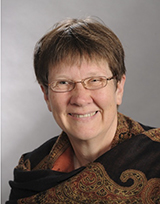
In overview, my research interests are in the disciplinary subfield of medical anthropology, in which I take a sociocultural approach. My work draws its inspiration from a deep commitment to the study of health and illness in its social and political context.
The range of my research projects and outputs is quite wide as they reflect my central interests of ideologies in health, care, inequalities in health care provision and moral reasoning - topics which are in themselves quite open ended and multifaceted concepts. Thus my work has been both diverse in topic (exploring health policy, health practitioners, problematising disability, pioneering the social study of the impact of new technologies in New Zealand medicine, media analysis of health debates, lay meanings of oral health etc) as well as methodologically flexible (frequently working in interdisciplinary collaborations and publishing in 'hard' as well as social science journals).
Care as Seriality: reflections on waiting at the bus stop for C21 health services
In the english language biomedical literature, person-centred care appeared in the mid C20 as a desirable alternative clinical paradigm to an overly patriarchal and paternalistic practice of biomedicine. Honoured more in its absence, this ideal of an empathetic and contextualizing practice remained an aspirational hope that guided the most empathetically gifted of health workers onwards to model their own practice styles on those of senior workers whom they most admired. As these clinicians and scientists passed through their generational cycles from novice to expert practitioner however, the wider context of their own workplace spaces began to change.
By the 1990s, it was no longer sufficient to develop the empathy to explore a client’s context, for the newly introduced New Public Management (NPM) created complex moral ambiguities as to the point and focus of care which required excellent workers to explore and recognize the impact of their own micromanaged professional contexts on the provision of their care. Although NPM may have passed its zenith, its legacy remains – the inserted layers of unaccountable, short term professional managers spreadsheeting and bullet pointing the path to better customer service; along with the additional complexity of the overlay of Digital Era Governance in 2010s.
This paper draws on various ethnographic insights into the performative ambiguities of care during such philosophical and organizational tumult and critically compares the current ideal of person-centred-ness with a view of care as a seriality. By the latter I mean to think of care as a recurring loose association of diverse selves and institutions, briefly formed into momentary cohesion by shared expectations that the bus of health care ought to be arriving soon...
Professor Lilie Chouliaraki
Lilie Chouliaraki is Professor of Media and Communications at the London School of Economics and Political Science. Her work focuses on the ethical and political complexities of communicating human suffering in the media with particular emphasis on four domains in which suffering appears as a problem of communication: disaster news; humanitarian and human rights advocacy; war & conflict reporting and migration news. Her most recent work is on "the cultural politics of victimhood" in western societies. Her book on the topic is forthcoming in Columbia University Press, New York (June 2023). Other book publications include "Discourse in Late Modernity" (1999), "The Spectatorship of Suffering'"(2006), "The Soft Power of War" (ed., 2008), "The Ironic Spectator. Solidarity in the Age of Post-humanitarianism" (2013, "The Routledge Handbook of Humanitarian Communication" (2021) and "The Digital Border. Migration, Technology, Power" (New York University Press, 2022). Lillie has also published more than seventy articles in peer-reviewed journals and edited volumes. Her work has been published in French, Italian, Portuguese, Polish, Danish, Greek and Chinese; she is the recipient of two LSE Teaching Excellence Award and four international awards for her research publications, more recently the Outstanding Book of the Year award of the International Communication Association (2015, for "The Ironic Spectator. Solidarity in the Age of Post-humanitarianism"); as well as a lifetime Fellowship of the International Communication Association (2020).
Beyond verification: Citizen videos from conflict zones and the ethics of embodiment
Platform journalism in the global North is caught within a fragile political economy of emotion and attention, defined, on the one hand, by the proliferation of citizen-filmed affective news and, on the other, by the risk of fake news and a technocratic commitment to verification. While the field of Journalism Studies has already engaged in rich debates on how to rethink the truth conditions of citizen-produced content in platform journalism, I argue that it has missed out on the ethico-political function of such content as testimonials of lives-at-risk. If we wish to recognize and act on citizen-driven videos of conflict as techno-social practices of witnessing human pain and death, I propose, then we need to push further the conceptual and analytical boundaries of the field. Drawing on examples from the Syrian conflict, I provide an analysis of the narrative strategies through which these videos acquire truth-telling authority and I reflect on what is gained and lost in the process.
Associate Professor Robert Huish
Dr Robert Huish is an Associate Professor in International Development Studies at Dalhousie University. His research broadly explores global health inequities, and more extensively on the impacts of sanctions on health and human security. In particular, Dr. Huish has focused on the crisis of sanctions in Cuba in his book "Where No Doctor has Gone Before: Cuba's Place in the Global Health Landscape", and he has also published widely on the impacts of sanctions in North Korea. Dr. Huish was named one of Canada's most innovative educators in the Globe and Mail's "Our Time to Lead" series. Dr. Huish is also the host of "GDP: The Global Development Primer Podcast", which is available wherever you get your podcasts. He also proudly serves as Firefighter and Pump Operator with Halifax Regional Fire & Emergency.
How Global Citizenship Education Performs Through Crisis
How crises are imagined of, planned for, and taught about reveals important disconnections in global citizenship education. Global citizenship education is widely grounded in building connections through spaces of performance. Educators and students take on different roles from the class, to their own communities, to seeking opportunities to "help" in other communities. How then does such pedagogy prepare students for crises in real time, be it war, climate adversity or even a pandemic?
In this presentation, Dr Robert Huish argues that global citizenship education could benefit from a deeper exploration of building skills and competencies that allow learners to handle complex crises as agents, actors and allies. He draws examples from his experience in designing a class simulation of real-time pandemic management at Dalhousie University, and his training as a firefighter in Halifax Nova Scotia. Taken together, Dr. Huish suggests that global citizenship skills can indeed prepare the next generation for global crises through a pedagogy of compassion and confidence. It is a call to move global citizenship education to a place where students can face panic in crisis, rather than be panicked by crisis.
Associate Professor James Headley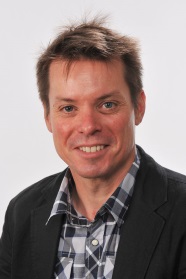
James Headley is an Associate Professor in the Politics Programme at the University of Otago.
His research interests are in Russian foreign policy, the European Union, nationalism, and International Relations theory. He is the author of Russia and the Balkans: Foreign Policy from Yeltsin to Putin (Hurst and Co./Columbia University Press).
He completed his PhD at the School of Slavonic and East European Studies, University College London.
Putting Russia back on the world stage: performing great power-ness in words, images and force
At the Munich Security Conference in February 2007, Russian President Vladimir Putin shocked his audience – and the wider world – with an outspoken attack on Western states and their disregard for Russia, and reminded them that Russia has a long history as a strong, independent actor. Putin's complaints were in fact not new, but it was the way in which he dropped the mask of diplomacy that made them heard this time. Was this a performance intended to provoke a response? Or was it a rather nervous but emotional outpouring of real sentiments? Regardless, it provided the script for subsequent action that above all was designed to show that Russia is a great power with its own interests that it would pursue by all means at its disposal, culminating in the full-scale invasion of Ukraine fifteen years later. Now, a global audience watches the highly visible actions of the protagonists of the war and joins in their battle of narratives. But it is deadly real for the people of Ukraine.
This talk examines the war in Ukraine in terms of performance/performativity, drawing on recent work in International Relations (IR) theory, including the so-called 'aesthetic' and 'practical' turns, constructivist writing on state roles and identities, and notions of performative diplomacy and popular geopolitics. It explores the differing depictions of the leaders – President Zelensky, the actor who previously played the president, with his skilful appeals to international audiences, and President Putin, the bare-topped man on the horse who has come to see himself as embodying Russia and now acts as a latter-day Tsar keeping his subservient courtiers at a distance – and the roles the two states project to the wider world: Ukraine as victim of naked aggression, Russia as a great power that stands up to the bullying West and its lackey; Ukraine as the anti-Russia of the east or as Russia's Other that isn't an Other. These depictions have been many years in the making. I will show how the Putin regime prepared the narrative of its war, particularly by the glorification of the Soviet victory in the Great Patriotic War and vilification of Ukraine as a Nazi state, making the 'special military operation' a re-enactment of World War II; how Russian culture-makers have contributed to creating an image of Russia and Ukraine that reinforces this narrative from below; and how Ukrainians respond in their own ways in front of the watching world.